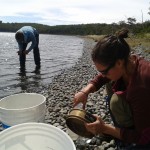 In the February edition of the journal Conservation Biology, Drs. Rodrigo Estevez, Christopher Anderson, Cristobal Pizarro and Mark Burgman published the review entitled Clarifying values, risk perceptions, and attitudes to resolve or avoid social conflicts in invasive species management.
In the February edition of the journal Conservation Biology, Drs. Rodrigo Estevez, Christopher Anderson, Cristobal Pizarro and Mark Burgman published the review entitled Clarifying values, risk perceptions, and attitudes to resolve or avoid social conflicts in invasive species management.
Summary. Decision makers and researchers increasingly recognize the need to effectively confront the social dimensions and conflicts inherent to invasive species research and management. Yet, despite numerous contentious situations that have arisen, no systematic evaluation of the literature has examined the commonalities in the patterns and types of these emergent social issues. Using social and ecological keywords, we reviewed trends in the social dimensions of invasive species research and management and the sources and potential solutions to problems and conflicts that arise around invasive species. We integrated components of cognitive hierarchy theory and risk perceptions theory to provide a conceptual framework to identify, distinguish, and provide understanding of the driving factors underlying disputes associated with invasive species. In the ISI Web of Science database, 15,915 peer-reviewed publications on biological invasions were found; 124 included social dimensions of this phenomenon. Of these 124, 28 studies described specific contentious situations. Social approaches to biological invasions have emerged largely in the last decade and have focused on both environmental social sciences and resource management. Despite being distributed in a range of journals, these 124 articles were concentrated mostly in ecology and conservation-oriented outlets. The study found that conflicts surrounding invasive species arose based largely on differences in value systems and to a lesser extent stakeholder and decision maker’s risk perceptions. To confront or avoid such situations, the authors suggest integrating the plurality of environmental values into invasive species research and management via structured decision making techniques, which enhance effective risk communication that promotes trust and confidence between stakeholders and decision makers.


 Since 2012, Northern Arizona University and a suite of partners in southern Patagonia, coordinated by OSARA, have forged new and productive relationships in the area of conservation, socio-ecological research and sustainability science. The first fruit of this relationship was the NSF International Research Experience for Students grant, known as “
Since 2012, Northern Arizona University and a suite of partners in southern Patagonia, coordinated by OSARA, have forged new and productive relationships in the area of conservation, socio-ecological research and sustainability science. The first fruit of this relationship was the NSF International Research Experience for Students grant, known as “